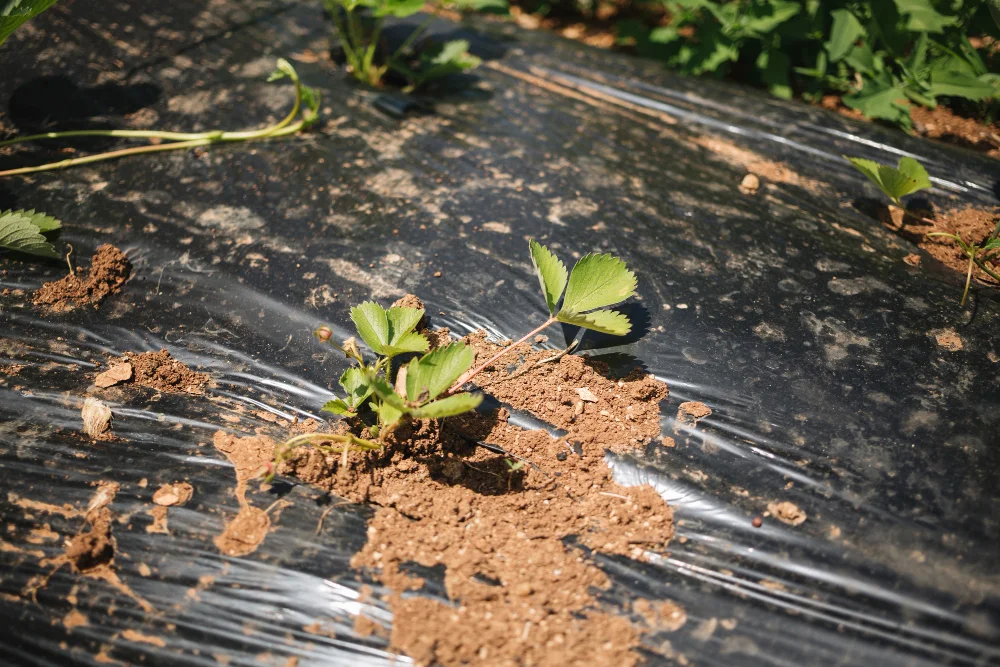Professional mulching involves heavy equipment, live traffic, utilities, and variable terrain. This page brings together core safety expectations from widely accepted standards so crews can plan work that is safe, compliant, and ready for audit. Use it as a practical checklist, then align with your local laws and site rules.
Note: this guidance is informational. Always confirm requirements with your authority having jurisdiction and your internal safety program.

This section explains who the guidance applies to, what kinds of equipment and tasks are in scope, and the typical settings where standards matter most. It is intended for professional operations that use industrial mulching equipment in active corridors and work sites.
The goal is simple, plan work that is safe, compliant, and ready for audit, then adapt the details to your local rules, permits, and manufacturer instructions.
A complementary resource is our long term care tips for industrial mulchers, which helps ensure safe operation through proper maintenance.
This guidance applies to purpose built mulchers and attachment heads mounted to skid steers, excavators, tracked carriers, and tractors that are used to cut, grind, or shred vegetation in place.
It covers routine maintenance clearing, emergency response after storms, fuel reduction for firebreaks, and access work in utility corridors and pipeline rights of way. It excludes consumer yard work and any task that falls under separate heavy construction categories such as demolition.
For help matching the right tool to the job, see choosing the right attachment for vegetation type.
Mulching frequently occurs beside live traffic, within rail corridors, beneath overhead conductors, above buried services, and in publicly accessible spaces. Each setting introduces proximity risks that must be controlled before the first cut.
For efficiency without compromising safety, our heavy duty mulcher fuel efficiency guide explains how to keep performance steady even in high-risk zones.
Convert these controls into measurable rules in the daily hazard analysis, distances, radio channel, signage plan, buffer widths, slope limits, and a clear go or no go line. Recheck them when wind, rain, or visibility changes. End each briefing with a quick drill, emergency stop, machine shutdown, and evacuation path, so the team can act without hesitation.
Clear roles keep the work predictable and safe. Assign responsibilities in the plan, brief them daily, and give everyone stop work authority.
Build a steady rhythm, a short pre start brief, a mid shift huddle, and a five minute debrief at close. Name alternates for each role in case of absence, and note who holds the keys for permits and utility contacts. Make stop work authority explicit and respected. This cadence keeps communication clean and leaves a paper trail that stands up in audits.
This structure is also key when integrating attachment selection best practices so the chosen head matches the job and terrain, reducing unnecessary hazards.

Personal protective equipment is the last control between the crew and real site hazards, flying debris, noise, vibration, dust, heat, and uneven ground. The goal is to select the right gear before the shift begins, verify it at the briefing, and adjust it as conditions change. Crews perform better and stay focused longer when PPE fits well and stays clean. Supervisors make it easy to comply by staging spares and logging replacements, so no one has to hunt for missing gear. Consistent use of PPE reduces injuries, protects eyesight and hearing, and supports a professional, audit ready safety culture.
For dusty or hot sites, consider pairing PPE guidance with our cooling system checks for mulchers to maintain both operator comfort and machine safety.
Every mulching shift starts with the same essentials. Operators and ground crews wear hard hats, high visibility outer layers, safety glasses, cut resistant gloves, long sleeves, long pants, and protective boots with ankle support. Hearing protection is required inside and outside cabs whenever sound levels exceed safe limits, which is common during cutting. Crews keep spare lenses and wipes handy because dust and sap degrade visibility through the day. Water and electrolytes ride in the cab and the support truck, since heat and dehydration slow reaction time and increase mistakes.
A simple kit removes friction from safe behavior. Keep a labeled tote with one spare of each item per person, store it in the support truck, and check it during the pre start briefing. When the basics are always available and clean, crews wear them without reminders and work moves faster.
Some tasks and seasons add risks that the baseline kit does not cover. Manual felling of leaners or hangers calls for chainsaw chaps and cut resistant sleeves. Close inspections near the head require a face shield and heavy gloves, but only under full lockout tagout. Dust or smoke requires a respirator with the correct filter, and the supervisor confirms fit and availability. Fire weather adds water packs and extinguishers, while winter brings traction aids and layered clothing that preserves mobility and sensation.
Plan these add ons in advance. Note them in the job hazard analysis, stage them in a separate bin, and brief when to deploy them. When the crew expects the change and knows where to find the extra gear, the switch is quick and compliance stays high.
Fire weather or freezing conditions also require operational changes found in cold weather performance and power loss prevention tip
PPE only protects when it fits, functions, and remains in good condition. Supervisors inspect helmets for cracks, check suspensions for wear, and replace eyewear that is scratched or cloudy. Earmuff seals get wiped and replaced when they harden, and foam plugs are single use. High visibility garments fade in the sun, so panels and reflective tape get checked monthly. A simple issue and swap log keeps restocking on schedule and stops last minute scrambles on mobilization day.
Store PPE out of direct sun and away from fuel vapors, keep wipes and spare parts in the same bin, and assign one person to collect swap dates each week. This light routine keeps protection reliable, improves comfort, and shows auditors that you manage exposure with intent.

Engineering controls do the heavy lifting for safety. Proper guarding keeps energy and debris inside the cutting chamber, certified structures protect the operator, and tested controls stop motion when something goes wrong. Crews build a short routine around inspection, a start of shift function test, and clear out of service rules. These habits turn minor defects into quick fixes instead of major incidents. A machine that passes these checks is smoother to run, easier to spot, and safer to share space with.
The guarding section pairs well with our operator guide to ensure equipment stays compliant and operational.
Mulching heads rely on intact guarding to keep chips directed down and away from people and property. Front doors stay closed for controlled feeding, opening only when technique and material demand it. Chain curtains or equivalent shields must cover open faces with no missing links, and deflectors and wear plates must be intact. Before the machine crosses public areas or transports between cuts, the rotor is powered down and allowed to stop completely. The operator uses ground speed and rotor speed to maintain a downward discharge pattern and avoids any behavior that flings material forward.
If a door will not latch, a curtain is missing, or a deflector is bent into the throw path, stop and tag the head out of service. Photograph the issue, repair to specification, and only then restart. This line in the sand protects crews and the public and keeps your incident record clean.
Certified rollover and falling object protection gives the operator a fighting chance when nature and gravity push back. Structures must be intact, mounts must be solid, and glazing must allow clear vision in every direction. Wipers, washers, lights, mirrors, and cameras support visibility in rain, dust, and low light. Seat belts are worn at all times, no exceptions. Any impact, tip, or heavy strike removes the unit from service until a competent technician inspects and clears it, and that sign off rides with the machine number in the site file.
Take five minutes at the end of the day to clean glass and lenses. That small habit pays back the next morning when glare and dust try to steal your sightline. Clean vision reduces fatigue, speeds decisions, and keeps the focus on the cut.
A quick function test at low speed confirms that the machine will obey when the operator needs it most. Emergency stop must kill the head and feed instantly, interlocks must prevent engagement with doors open, and neutral start must work every time. Horns, beacons, alarms, and radios also get checked, since a stop call from a spotter is only useful if the operator hears it. Any failed test is a do not operate outcome until repair is complete. Lockout tagout is mandatory for inspections, tooth changes, and cleanout, and operators verify zero energy before hands go near the head.
Keep a spare radio and a charged battery in the support truck, run a one minute stop word drill at the end of the briefing, and note results on the daily sheet. These small habits build muscle memory and shorten reaction time when something unexpected happens.
This planning mindset is also reflected in pre operation checks before large scale mulching missions, which supports both safety and efficiency.
A safe work zone is predictable, tidy, and easy to navigate. Crews map entries and exits, choose staging areas outside swing and throw paths, and route machines to avoid backing whenever possible. Traffic and rail plans are agreed with the authority before tools touch the ground. Signage and tapers match posted speeds, and spotters control public approach on trails and park paths. The crew keeps an open lane for emergency vehicles and updates the plan when weather or visibility changes.

“Plan the zone, set the limits, and hold the line. Production follows safety, not the other way around.”
Good setup saves time and lowers risk all day long. Before the first cut, the team draws a simple map that marks entries, exits, utilities, water crossings, and steep sections. A staging area is chosen on firm ground outside the throw zone, with space for fuel, tools, and crew briefings. Travel lines favor forward motion with wide turn locations planned in advance. The operator and spotter agree on radio channel, call signs, and hand signals. Barricades and cones guide the public away from the work area while a clear path for emergency services remains open.
Walk the plan as a team and confirm where the machine will turn, refuel, and pause for cleanout. That five minute walk prevents confusion, keeps people out of the swing, and reduces the chance of a close call in tight ground.
On public roads, approved signs are set at safe distances in advance of the work zone with taper lengths that match speed limits. Rails require possession windows or a flagger in contact with control, and the crew must stand in safe locations during train movements. Trails and parks use spotters at approaches and clear notices at trail heads. When a member of the public requests passage, the head is powered down, the machine is stable, and the operator gives a clear acknowledgment before anyone moves.
A laminated copy of the traffic or possession plan rides in the support truck along with spare cones and signs. Run a short role play at the start of shift to polish the routine, then hold the line all day, no improvisation near live traffic.
Mulching throws energy, so the crew establishes a debris zone that reflects material size, head speed, wind, and slope. No one enters that zone while the head is engaged. When close support is required, the machine goes to neutral, the head stops, and the operator signals that approach is safe. Work near a live lane uses a buffer strip between the head and traffic, and a blocker vehicle when required by the plan. The spotter owns the boundary and resets it if conditions change.
A breach is a stop work moment. Reset the boundary, brief what failed, and only restart when controls hold. A strict approach to the zone turns near misses into learning instead of injury.

Utilities set hard limits that production goals do not change. Crews identify voltage, apply the strictest approach distance, and assign a dedicated spotter. Underground lines are located and marked before any disturbance, and a no rip buffer is drawn on the map. Contacts and near misses demand fast, calm response, immediate notifications, and accurate records. These steps protect people, limit damage, and keep projects on track with owners and regulators.
Work under or near lines follows approach distances set by the utility owner and the authority having jurisdiction. Spotters watch boom height and terrain changes that can reduce clearance, and wind conditions are considered before each pass. Tall stems are sectioned and felled away from conductors. If any task would breach the approach limit, the team pauses and engages the utility for an outage plan or supervised method. Crews document voltage, approach distances, and spotter details in the daily brief.
Photograph boundary marks at the start of shift and redo them if wind, visibility, or ground level changes. These simple records prove control and help the crew hold a safe line when pressure rises.
No ground disturbance begins until locates are fresh and visible. The crew reads the legend for color codes and depth notes, then keeps a buffer that reflects soil conditions and machine size. Root balls are not ripped near marks, and grades are not lowered without written permission from the owner. Where a route must pass close to a mark, hand or vacuum methods verify depth and position.
Treat locates as living information. If soil movement, recent construction, or mismatched depths suggest the line may not match the mark, stop and re verify. A quick toolbox talk on color codes keeps everyone reading the ground the same way.
Owner contacts for electrical, gas, water, fiber, and rail are posted in the cab and at the sign in board. The team practices the first five minutes of response so everyone knows what to do if there is a contact or a near miss. The supervisor logs time, location, weather, task, and who was notified, and adds photos and sketches. Restart only after the owner clears the site and new controls are briefed.
Review the contact sheet every Monday and test the numbers. A two minute radio drill builds muscle memory for the stop word, the perimeter call, and the owner notification, which keeps people calm when seconds matter.
If you want a quick sanity check on your setup or a clear plan your crew can brief in minutes, we can help. Share your site type, location, timelines, nearby utilities, and any permit constraints, and we will outline a simple method with staging notes, exclusion distances, and a printable checklist. The goal is practical, safe, and auditable work that fits your ground and your rules. Start the conversation and get a plan you can put to work on your next shift.
To provide the best experiences, we use technologies such as cookies to store and/or access device information. Consenting to these technologies will allow us to process data such as browsing behavior or unique IDs on this site. Failure to consent or withdrawing consent may adversely affect certain features and functions.